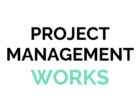
If I had a pound for every time someone in IT Project Management had talked about ‘flexible resources’ or resourcing … well, I’d have a few quid by now. It’s become something of an IT buzz word, hasn’t it, but I wonder sometimes whether we’ve lost sight of its true meaning?
Distilled to its essence, flexible resourcing means the temporary hiring of individuals, or a whole team of professionals, who deliver clearly defined business outcomes in sync with your company or organisation’s needs. It is probably the fastest growing and, for many businesses, the default means of providing both covers for and flexibility around key skills. Within this black and white broad-brush definition, there is a spectrum of shades and hues. Self-employed contractors (often on short-term contracts) may bulk up your general headcount, while specialist interim project managers might be hired to deliver specialist skills. Flexible resourcing, while it means different things to different organisations, still boils down to one simple thing – the quality of the people delivering it.
If you get the people part right, you stand a greater chance of leveraging maximum benefit from flexible resourcing. Here are seven tips to help get flexible resourcing right …
1 – Make strategic flexible resourcing someone’s responsibility – either in-house or a trusted partner who knows your culture and where your business is going.
That person or partner then needs to REALLY know the objectives, strategy and existing resources, not just for the business as a whole but for your silos, business units and departments … and how they fit your global strategy. HR does a great job with human resources – your on the books headcount – but I don’t think I’ve ever come across an FR Director!
2 – Clearly define your organisation’s current capabilities AND its needs in the future.
When you get a grip on core competencies, resources and functions and you can forecast requirements moving forward and identify exactly what skills you need, when you need them, giving you the best possible return on investment. The more strategic your approach to flexible resourcing, the greater return you get, which sounds obvious but it is surprising how many businesses take an ad hoc approach to flexible resourcing! When you are able to forecast your future talent requirements, IT shifts from being a cost centre into a strategic business partner so the best in class firms measure their change in project management capability at least once a year.
3 – Encourage 360 Degree Knowledge Sharing.
The best flexible resourcing results come from the seamless integration of external and internal talent. If you were to take a helicopter view of such a project you wouldn’t be able to tell where one began and the other ended. Can you put flexibly resourced talent through a formal induction into your company? Alternatively, ensure that your resourcing partner knows your business so that incoming talent is fully aligned with your culture and needs. When you encourage and facilitate sharing of knowledge between flexibly resourced and permanent talent the rewards are abundant. I’ve seen flexibly resourced talent solve long-standing issues because they have faced and solved them elsewhere before, so share as much as you can … lessons that have been learned, mistakes that have been made, challenges that have yet to be resolved. Some firms are precious about their intellectual properties (and in some cases that’s fine), most times though when knowledge sharing is a two-way street, everyone benefits.
4 – Ensure that ALL work undertaken by flexibly resourced interim talent has very, VERY clearly defined objectives.
Perhaps this sounds like a stupid thing to flag up – you’re buying in a flexible resource – surely you know what it is you want them to achieve, right! Amazingly, sometimes (more often than you’d think) it is the case that while a business may have identified a capability gap the specific need or desired outcome may not have been brought into laser-sharp focus. Imagine a football team identifying a gap and taking a goalkeeper on loan, and then wondering why their new signing isn’t scoring the goals they needed. The flexible resources market has evolved to the extent that you can be laser focused on your actual need and get just the right person for the job. If you struggle with this, get a partner with a track record of identifying gaps and deploying the appropriate resource.
5 – Choose a flexible resourcing partner that knows its available talent pool thoroughly.
There is a temptation to go with the firm with the largest ad, boasting the biggest pool but that is not usually the best option. Looking for a cultural fit between your business and your flexibly resourced talent is not a luxury, it is an achievable must have. It’s no coincidence that providers who pride themselves on achieving a cultural fit and finding the exact match for your strategic or specialist needs … usually deliver this. To be fair, sometimes those flashy ad firms can do a good job bulking out more general headcount but if you have a great partner for your specialist needs you may be missing out by not running these requirements past them too! Ask how a potential flexible resourcing partner assesses candidates for inclusion in its database, how do they measure performance after each assignment and can they show demonstrable ROI? Ask lots of questions and you’ll get the right candidates.
6 – Give feedback … regularly.
You do this with internal staff so why not interim talent. Think back to that football team, imagine the manager barking instructions to his players from the touchline, would he just target his ‘in-house’ squad or would he also shout to his on-loan players? In my experience, companies that give regular feedback to flexibly resourced talent get better results from them and, usually, the tighter the feedback loop the better with flexible resources.
7 – Ask for help.
There is a reason why a whole industry has grown around flexible resourcing – it’s simple supply and demand. The more strategic and specialist the role you are seeking to flexibly resource, the more difficult it is to get the right person in place. It can be hard to identify the specific strategic gap and an independent pair of eyes is often best placed to nail this and advise on the right fit. All too often flexible resourcing is a ‘panic buy’ – get help assessing your business need and seek advice on the most effective solution.
Flexible resources and flexible resourcing have become buzz words within IT Project Management circles, but we mustn’t forget it is actually PEOPLE who are the catalyst. Ultimately, it is the quality of your people that enables them to act and deliver as flexible resources, when you have talent with the skills to run multiple projects, diverse scenarios and virtual environments, as and when needed, then you take resource flexibility to a whole new level.
Find out more about Project Management as a Service from Stoneseed
